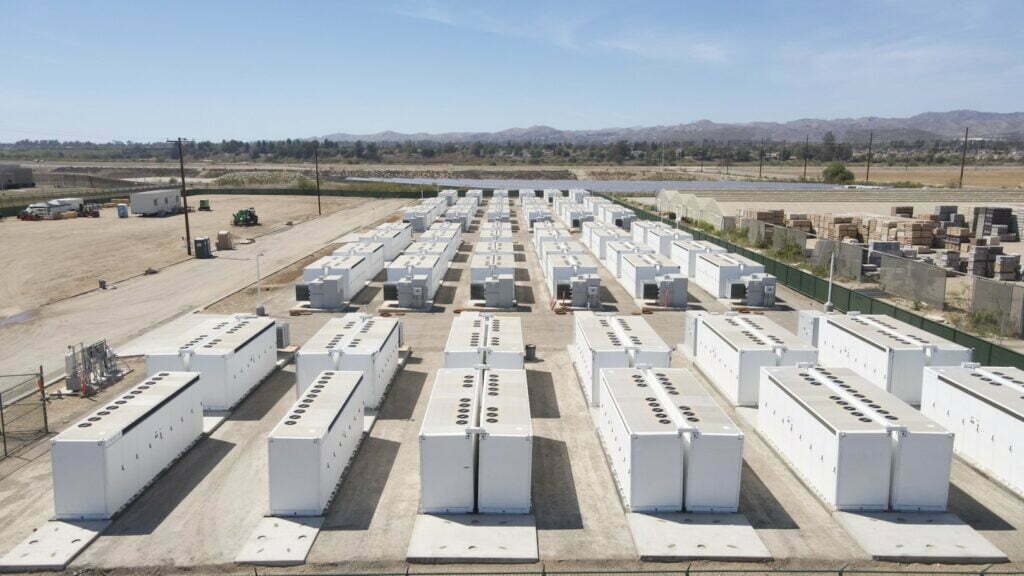
Progress has been made on 1.8GWh of battery energy storage projects in the service areas of California investor-owned utilities (IOUs) San Diego Gas & Electric (SDG&E) and Pacific Gas & Electric (PG&E).
The California Public Utilities Commission (CPUC) yesterday (10 February) authorised SDG&E to build three battery energy storage system (BESS) facilities totalling 161MW/664MWh. The facilities are expected to be completed in late 2022/early 2023.
Also made public yesterday were further details of the 300MW/1,200MWh Nighthawk BESS project which will be built in PG&E territory, by developers Tenaska and Arevon.
Each of them are part of a series of new projects stemming from CPUC directives to the state’s load serving entities (LSEs), including utilities, to procure additional energy resources to bolster the grid. The state has suffered numerous power shutoffs due to the recently increased wildfire risk and plans to have a zero-carbon electricity system by 2045.
“Investing in advanced technologies like energy storage is critical to advancing our state and region’s aggressive climate goals, including getting to net zero greenhouse gas emissions, with the added benefit of making the energy grid more resilient,” SDG&E Vice President of Energy Innovation Miguel Romero said.
SDGE’s three are the latest in a series of projects which are SDG&E-owned and operated totalling 145MW by end-2022 and around 300MW by end-2023.
CPUC approved engineering procurement and construction (EPC) contracts signed by SDG&E for the 161MW of projects with Mitsubishi, Fluence and one build-own-transfer contract with ConEd Development. The three projects’ estimated total cost was given at US$399.2 million.
| Project / Location | Technology | Counterparty | Output (MW) | Duration/ Capacity (MWh) | Contract type | Contract length |
| Pala-Gomez Creek / Pala, California | Lithium-ion BESS | Mitsubishi | 10MW | 6 hours / 60MWh | EPC | 10 years |
| Melrose / Vista, California | Lithium-ion BESS | Fluence | 20MW | 4 hours / 40MWh | EPC | 10 years |
| Westside Canal / Imperial Valley, California | Lithium-ion BESS | ConEdDev | 131MW | 4 hours / 524MWh | BOT | 10 years |
PG&E for its part has opted for procuring capacity and services from third party-owned BESS projects rather than directly invested and operated ones.
Nighthawk is the second-largest of nine BESS developments totalling 1.6GW/6.4GWh that PG&E announced agreements to procure from last month, the largest of which is an extension to Moss Landing Energy Storage Facility, the biggest in the world. These will bring the company’s BESS capacity to 3,330 MW by mid-2024 with 20% completed and connected to the state grid already.
Developer Tenaska said the Nighthawk project will be connected to a substation at Sycamore Canyon, which receives large amounts of solar generated in the California desert to be distributed to the San Diego area.
The BESS itself will be sited in an existing industrial park and its year-long construction is expected to begin next year.
Tesla Megapack storage systems will be used: Arevon already brought into operation 250MW/1,000MWh of projects in California and Nevada by the end of 2021.
In September Energy-Storage.news reported that the renewable energy company had signed a 2GW/6GWh master supply agreement with Tesla for Megapacks to be used in a portfolio of nine projects Arevon is co-developing with Tenaska across the three California IOUs’ service areas.
SDG&E’s new projects are specifically in response to the CPUC’s Emergency Reliability rulemaking proceeding while PG&E’s nine relate to its June 2021 ‘Decision Requiring Procurement to Address Mid-Term Reliability’. The latter requires LSEs to procure or contract for 11.5GW of additional resources, to begin delivering energy to customers by June 2026, with tranches phasing that in over 2023, 2024 and 2025.
The Mid-Term Reliability ruling has also led to a world-first procurement for long-duration energy storage, with a contract awarded to an eight-hour duration lithium project awaiting approvals.
With its 2023/24 pipeline agreed already, PG&E will issue a phase two competitive selection later this year for resources to start delivering energy over 2025/26.

